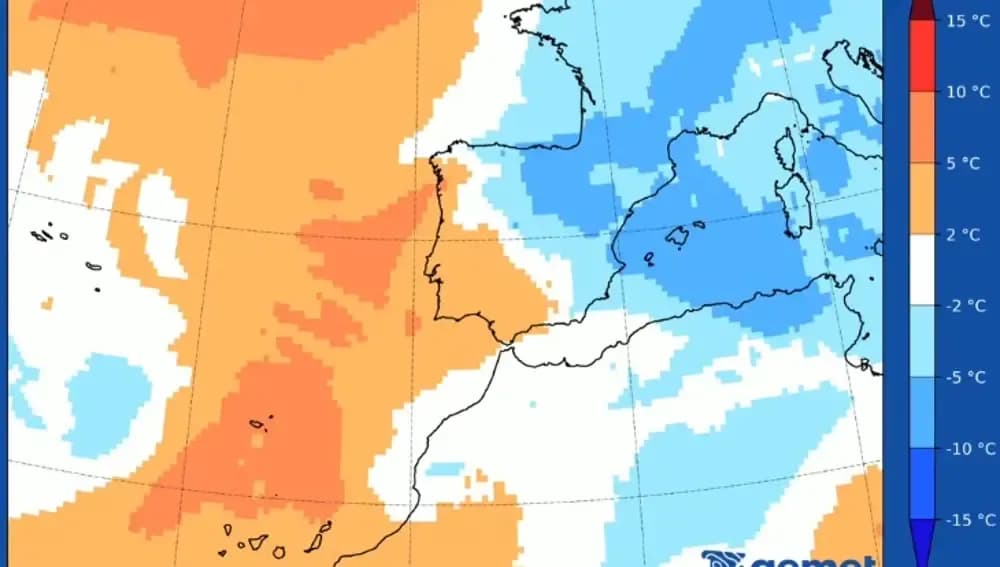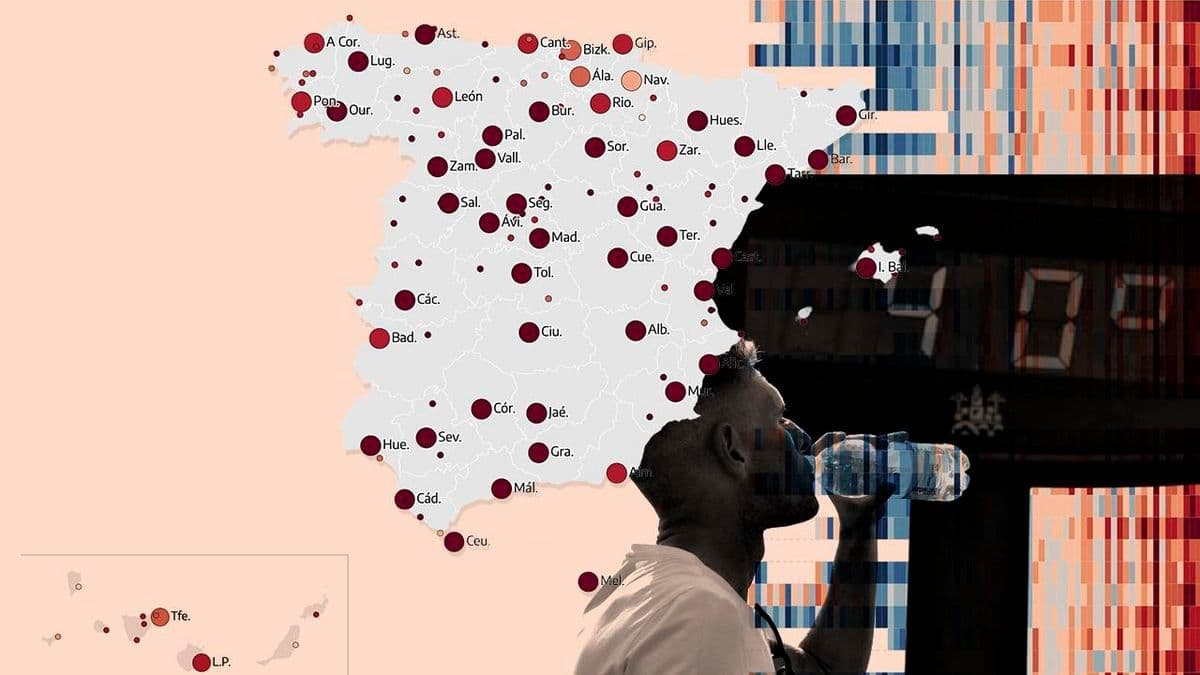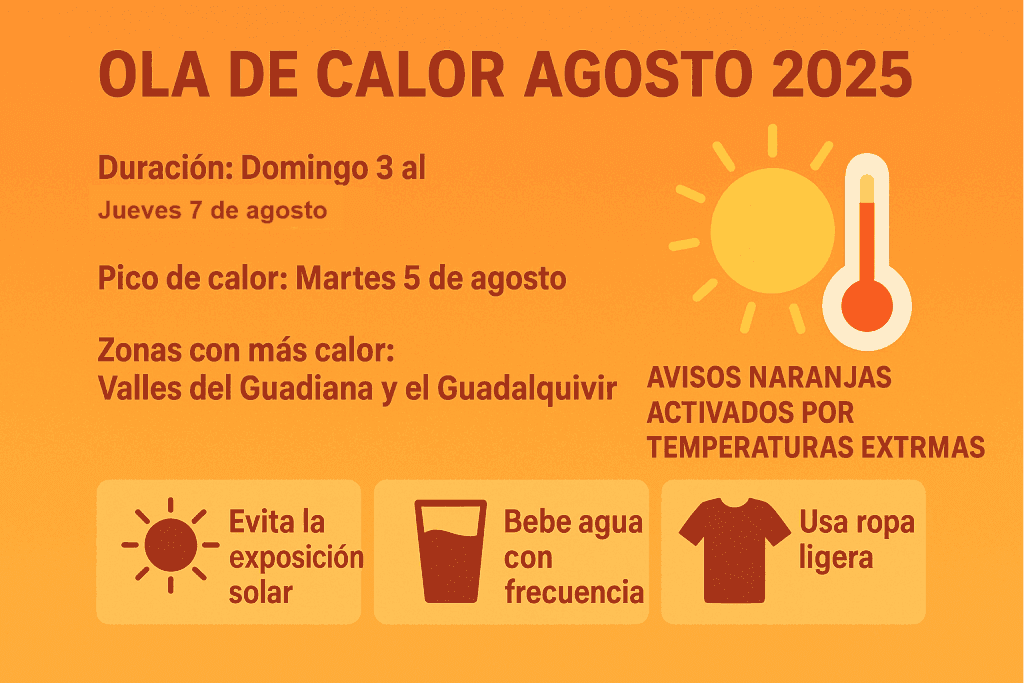The Iberian Weather Paradox: Navigating Spain's Temperamental Summer
Unlock Spain's summer weather secrets. Explore sudden shifts, diverse regional climates, and the atmospheric drama defining the Iberian Peninsula's seasons.

Current Forecast: A National Overview
's summer weather often throws a curveball, and recent forecasts paint a vivid picture of this unpredictability. While many might envision endless sunshine, a glance at the national overview reveals a surprising mix. We're seeing significant temperature drops across much of the country, particularly in the east and central regions. , for instance, is currently hovering around a mild 30ºC, a far cry from its usual scorching summer peaks. Meanwhile, northern areas like the coast are experiencing unusually cool conditions, with temperatures struggling to climb past 22-24ºC. This stands in stark contrast to the southwest, where temperatures are slightly recovering but still feel cooler than typical for this time of year. The , ever the outlier, maintain their characteristic stable, partly cloudy skies without significant rain. These unexpected shifts extend beyond just temperatures. Severe weather warnings are currently in effect, with orange alerts for strong storms and heavy rain issued for the , , and . Yellow alerts also cover parts of , , and the for similar intense rainfall and storms. This isn't just a brief shower; these are significant weather events that demand attention, especially in regions typically associated with dry, sunny summers. The immediate outlook suggests this instability will persist in the Mediterranean area for a day or two before the more characteristic summer warmth begins to reassert itself across the country, highlighting a truly dynamic Iberian summer.

Summer's Sudden Turn: The Atmospheric Forces at Play
What fuels these abrupt shifts from summery warmth to intense storms and cooler temperatures? 's unique geographical position and atmospheric dynamics are key players. The "marked instability" we're witnessing, leading to severe warnings across various regions, isn't random. Often, it's the result of cold air masses descending from higher latitudes, clashing with the hot, humid air accumulated over the . This collision creates a potent recipe for convective storms, characterized by heavy downpours and strong winds. The frequently bear the brunt of these initial impacts, with storm activity then moving inland to areas like the , , , and . Even coastal areas face warnings for powerful wind gusts, a significant hazard for maritime activities. While such instability can feel jarring, it's a natural, albeit dramatic, response to the interplay of different air masses. The good news is that these periods of intense weather are often transient, with the sun typically reclaiming its dominance within a few days, allowing summer temperatures to rebound, though northern regions might still see occasional showers. This rapid turnaround is a hallmark of 's temperamental summer climate, showcasing its capacity for both intense heat and surprising meteorological drama.

Beyond the Beach: Adapting to Spain's Diverse Summer Climates
's summer climate is far more nuanced than postcard images of sun-drenched beaches suggest. While the Mediterranean coast, including the , can experience those intense storms and coastal winds, other regions face entirely different challenges. Inland areas, particularly in , might grapple with persistently high temperatures, sometimes triggering heat warnings, even as other parts of the country cool down. Cities like , though currently cooler than usual, are accustomed to searing heatwaves that demand a different kind of adaptation – siestas, late dinners, and air-conditioned havens. Contrast this with the north, where summers are typically milder and greener, offering a refreshing escape from the southern heat but occasionally experiencing those unseasonal cool snaps and light showers. The , with their unique microclimates, remain a world apart, consistently stable and warm. This vast climatic diversity means "summer in Spain" isn't a single experience; it's a spectrum. Locals and visitors alike must remain agile, ready to swap beach plans for museum visits or adjust their daily routines to the specific demands of their chosen region's weather. Understanding this regional tapestry is essential for truly navigating an Iberian summer, proving that adaptation is as varied as the landscape itself.

The Climate Conversation: Decoding Spain's Evolving Summers
The dynamic nature of 's summer weather isn't just a seasonal quirk; it's increasingly part of a broader climate conversation. The question of whether we're facing an "extreme summer" has become a recurring theme, driven by phenomena like the "mapa del calor" (heat map) showing escalating temperatures across municipalities, and reports of multiple heatwaves with nights failing to drop below 25 degrees Celsius. These intense heat events, coupled with the sudden, sometimes violent, summer storms, suggest a shift in established patterns. While historical data shows natural variability, the frequency and intensity of these extremes are raising concerns among meteorologists and the public alike. Is the "temperamental" summer becoming the new normal? This evolving climate scenario impacts everything from public health and agriculture to tourism and water management. Understanding these long-term trends, beyond just the daily forecast, is crucial for 's future. It prompts a deeper look at how a country so intrinsically linked to its climate will continue to adapt to summers that are clearly changing, demanding resilience and forward-thinking strategies from its society in the face of an increasingly unpredictable global climate.
Related Articles

Spain's Summer Plot Twist: How Rains Are Rewriting July's Narrative

Spain's Summer Plot Twist: How Rains Are Rewriting July's Narrative

Spain's Climate Conundrum: Unpacking the Volatile Dance of Extreme Temperatures

Spain's Climate Conundrum: Unpacking the Volatile Dance of Extreme Temperatures

Under the Scorching Sun: How Spain's Heatwaves Are Redefining a Nation

Under the Scorching Sun: How Spain's Heatwaves Are Redefining a Nation

Spain's Enduring Summer: Decoding the August Heatwave and How to Adapt
